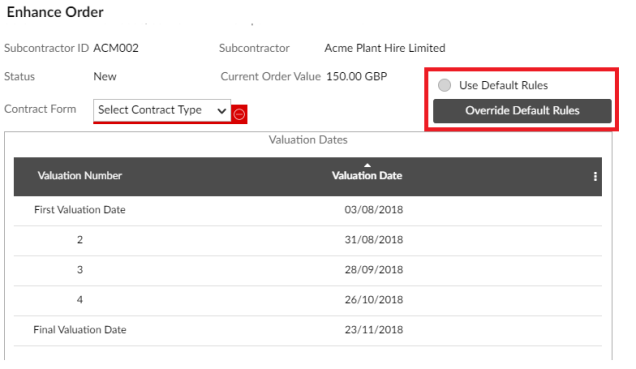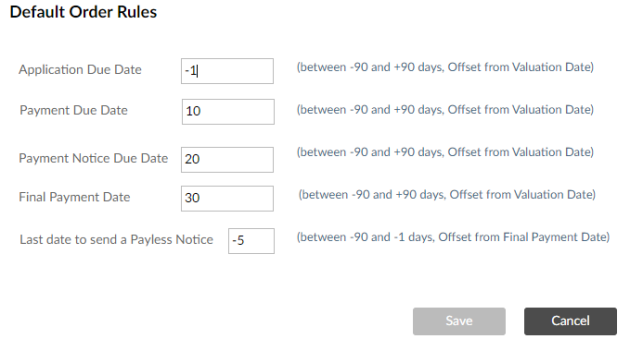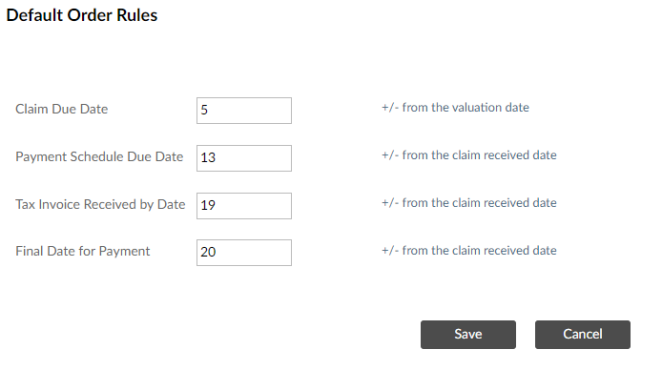This is a new topic in 12.03.
This is a new topic in 12.04.
Content highlighted in yellow is new in 12.03.
Content highlighted in blue is new in 12.04.
When a main contractor tenant is enhancing a subcontract order, one of the steps they must take is to specify the rules of the contract regarding due dates for applications, payments, payment notices and the final payment, as well as the last date to send a pay less notice. They can tick a box to use the default rules or click a button to override the default rules and manually set their own.

The default rules can be set at global level, company level and contract level. The global default rules covered in this section will only be used if there are no rules set for the company or contract associated with the subcontract order in question.
The rules available to set vary according to region. The numbers all refer to calendar days, not working days.
UK

For the Application Due Date, Payment Due Date, Payment Notice Due Date and Final Payment Date, you must enter a value between -90 and 90. This value relates to the number of days away from the Valuation Date. For example, in the image above, the Application Due Date is set to -1 and the Payment Due Date is set to 10. This means the deadline for the subcontractor tenant to submit an application for payment is one day before the Valuation Date and the deadline for the main contractor tenant to submit the payment is ten days after the Valuation Date.
For the Last date to send a Pay Less Notice, you must enter a value between -90 and -1. This value relates to the number of days away from the Final Payment Date. For example, in the above image the Final Payment Date is set to 30 and the Last date to send a Pay Less Notice is set to -5. This means the deadline for the main contractor tenant to submit a Pay Less Notice is five days before the Final Payment date, or twenty-five days after the Valuation Date.
When you are satisfied with the rules you have set, click  to save your changes.
to save your changes.
Australia

For the Claim Due Date, you must enter a value between -90 and 90. This value relates to the number of days away from the Valuation Date. For example, in the image above, the Claim Due Date is set to 14, meaning the deadline for the subcontractor to submit a claim is 14 days after the Valuation Date. The Claim Due Date must be before the Payment Schedule Due Date.
For the Payment Schedule Due Date and the Final Date for payment, you must enter a number between 0 and 90. This value relates to the number of days away from the Claim Received Date. The Payment Schedule Due Date must be before the Tax Invoice Received by Date.
For the Tax Invoice Received by Date, you must enter a value between -90 and 90. This value relates to the number of days away from the Claim Received Date. This is for non-RCTI subcontractors only - the field will be hidden if the order is for an RCTI subcontractor. The Tax Invoice Received by Date must be before the Final Date for Payment.
When you are satisfied with the rules you have set, click  to save your changes.
to save your changes.